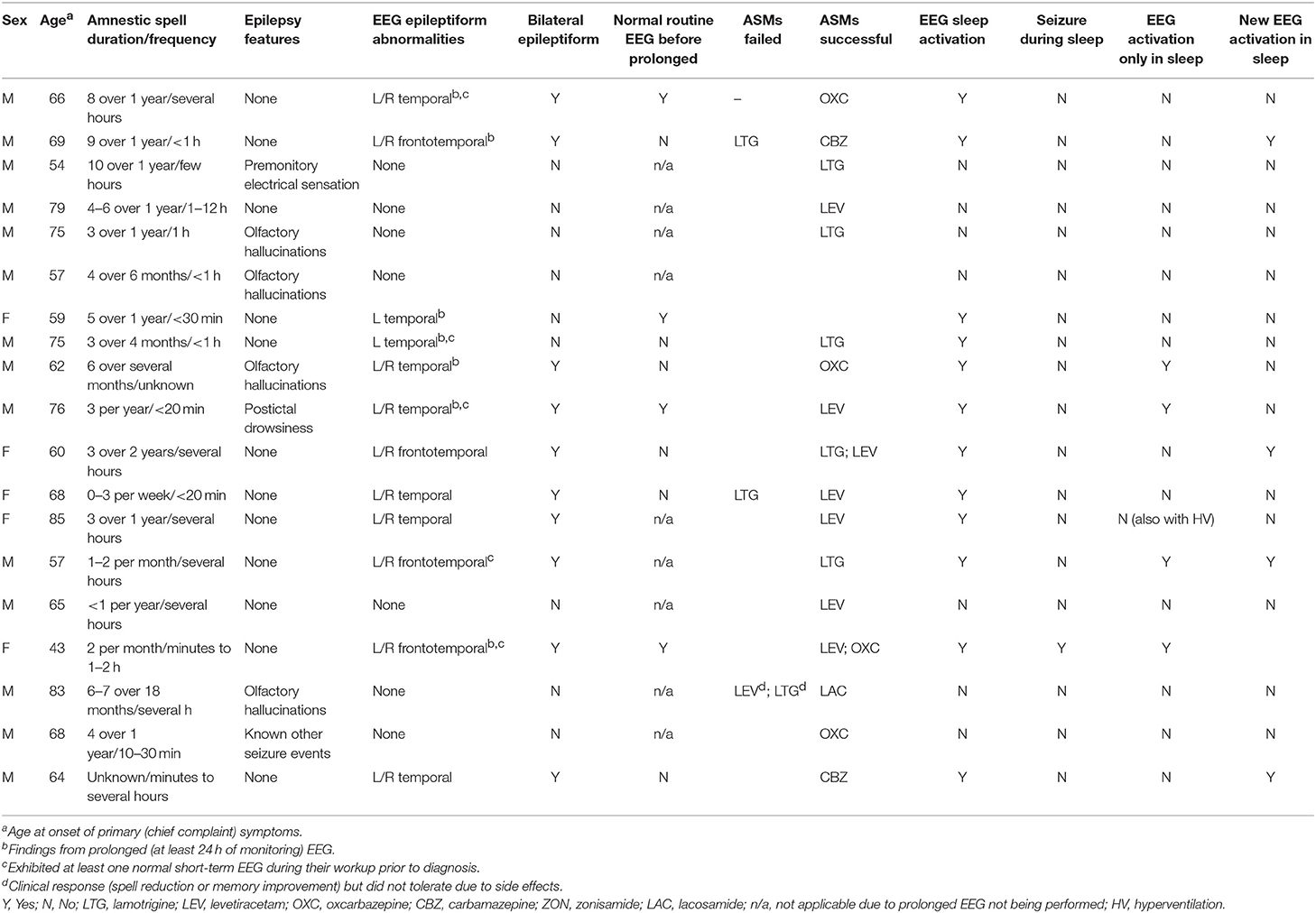
Clonic seizures are associated with repeated jerking muscle movements. People having this type of seizure may suddenly fall down or drop their head. Atonic seizures, also known as drop seizures, cause a loss of muscle control. People who experience these seizures may lose consciousness and fall to the ground. These seizures usually affect muscles in the back, arms and legs. Tonic seizures cause stiffening of the muscles. They may occur in clusters and can cause a brief loss of awareness. These seizures may happen up to hundreds of times a day. Absence seizures typically cause a person to stare into space or make subtle body movements such as eye blinking or lip smacking. Absence seizures, formerly known as petit mal seizures, often occur in children. Different types of generalized seizures include: Seizures that appear to involve all areas of the brain from the time they start are called generalized seizures. They include migraine, narcolepsy or mental illness. Symptoms of focal seizures may be confused with other disorders of the brain or nervous system. They also may cause sudden sensory symptoms such as tingling, dizziness and seeing flashing lights. These seizures may result in trouble speaking and involuntary jerking of a body part such as an arm or a leg. Some people have nausea or unusual feelings that are hard to describe. But the seizures don't cause a loss of consciousness.ĭuring these types of seizures, people may suddenly feel angry, joyful or sad. They also may change the way things look, smell, feel, taste or sound. They may not remember the seizure or even know that it occurred.įocal seizures without impaired awareness. They may perform repetitive movements such as hand rubbing, mouth movements, repeating certain words or walking in circles. People having these types of seizures may seem awake but they stare into space and don't respond to their environment. These seizures involve a change or loss of consciousness or awareness that feels like being in a dream.

Focal seizures with impaired awareness.This type of seizure can occur with or without loss of consciousness:

Focal seizuresįocal seizures result from electrical activity in one area of the brain. If providers don't know how the seizures began, they may classify the seizures as unknown onset. Seizures are classified based on how and where the brain activity causing the seizure began. Health care providers typically classify seizures as focal or generalized. They may include fear, anxiety or a feeling that you've already lived this moment, known as deja vu.

In conclusion, EPIAMNE score classified TEA with higher accuracy than PosEEG and pSymAT. Area Under the Curve (AUC) of EPIAMNE score revealed to be higher than PosEEG and pSymAT (AUCEPIAMNE = 0.95, AUCpSymAT = 0.85, AUCPosEEG = 0.67) and this superiority proved to be statistically significant (p-valueEPIAMNE-PosEEG and p-valueEPIAMNE-pSymAT < 0.05). ROC curve models and pairwise ROC curve comparison were used to evaluate and compare the diagnostic accuracy for TEA detection of EPIAMNE score, presence of symptoms atypical for TGA (pSymAT) and identification of anomalies (interictal epileptiform or temporal focal spiky transients) at stEEG (PosEEG). We subsequently incorporated qEEG features in EPIAMNE score, together with clinical and stEEG features. We computed and compared Power Spectral Density, demonstrating an increased relative theta power in TGA.

We retrospectively reviewed clinical information and standard EEGs (stEEG) of 19 patients with TEA and 21 with TGA. We proposed a scoring system-the EPIlepsy AMNEsia (EPIAMNE) score-using quantitative EEG (qEEG) analysis to obtain a tool for differentiating TEA from TGA. Transient epileptic amnesia (TEA) is a rare cause of acute amnestic syndromes (AAS), often misdiagnosed as transient global amnesia (TGA).


 0 kommentar(er)
0 kommentar(er)
